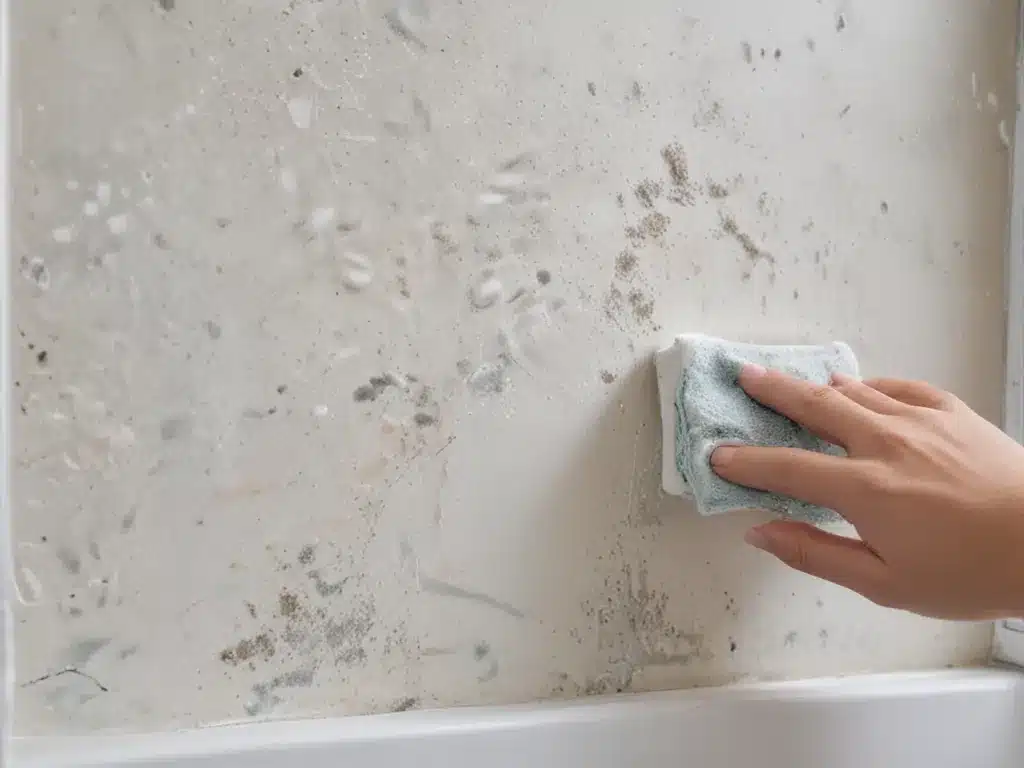What Causes Mould in the Bathroom?
Mould loves warm, humid environments like bathrooms. It thrives on surfaces that are frequently damp, like tile grout, caulk, walls, ceilings, windows, and shower curtains. The main culprits that lead to bathroom mould are:
-
Lack of ventilation – Bathrooms need proper ventilation to allow moisture to escape. Lack of exhaust fans or windows means humid air and condensation builds up. This provides the perfect conditions for mould.
-
Leaks and water damage – Leaky faucets, plumbing, or roofs can allow excess moisture into the bathroom. Any water leaks or damage to surfaces like drywall or wood can cause mould if not quickly repaired.
-
High humidity – Humidity above 60% encourages mould growth. Frequent hot showers and baths add a lot of moisture to the air.
-
Poor cleaning – Soap scum, dirt, and grime attract moisture. Infrequent cleanings allow mould to take hold in crevices.
How to Prevent Mould Growth
Preventing mould involves controlling bathroom humidity and keeping surfaces clean and dry. Here are my top tips to stop mould before it starts:
-
Increase ventilation – Use exhaust fans during and after bathing. Open windows periodically. Dehumidifiers can help regulate moisture levels.
-
Quickly fix any leaks or water damage – Address leaky plumbing and seals around windows and doors right away. Repair water damaged surfaces like drywall to prevent mould.
-
Clean frequently – Scrub surfaces like tile, grout, caulk and shower curtains regularly to remove soap scum and dirt before mould sets in.
-
Squeegee surfaces after bathing – Wipe down tile walls, glass doors and shower enclosures after bathing to control moisture buildup.
-
Limit humidifiers – Monitor humidity levels and adjust humidifiers accordingly. Excessive humidity encourages mould growth.
How to Remove Existing Bathroom Mould
If mould has already taken hold, tackle it quickly before it spreads and causes health issues. Here are safe and effective ways to get rid of bathroom mould:
Cleaning Tile and Grout
- Mix 1 part bleach to 4 parts water in a spray bottle. Spray moulded areas of tile and grout and let sit 5-10 minutes.
- Scrub with a stiff brush or sponge. Rinse thoroughly with clean water.
- For recurring mould, apply grout sealer to protect porous grout. Reapply sealer annually.
Cleaning Caulk and Shower Curtains
- Fill a spray bottle with undiluted white vinegar. Liberally spray on moulded caulk and shower curtains.
- Let sit 30 minutes then scrub with an old toothbrush. Rinse with water.
- Repeat as needed for stubborn mould. Replace badly moulded caulk.
Cleaning Drywall and Wood
- Protect eyes and skin. Wear gloves, goggles, and a mask.
- Spray concentrated 3% hydrogen peroxide solution onto moulded drywall or wood.
- Let bubble for 10 minutes. Scrub with a stiff nylon brush.
- Rinse thoroughly with water. Repeat if necessary.
- Dry quickly with fans. Repair any damaged surfaces.
Note: For severe mould, consider hiring a professional mold remediation specialist. Trying to remove large areas of mould on your own can be dangerous.
Maintaining a Mould-Free Bathroom
With diligent maintenance and moisture control, mould can be prevented. Follow these habits for a clean, healthy bathroom:
- Open windows and run fans for 30 minutes after bathing.
- Squeegee shower walls and wipe down surfaces after use.
- Scrub tile grout and caulk with a brush and baking soda paste monthly.
- Use a bleach and water solution to clean surfaces weekly.
- Immediately repair any leaks or water damage.
- Check for hidden moisture problems behind walls or under surfaces.
- Ensure exhaust fans are working properly.
- Keep humidity levels consistently below 60%.
Stay vigilant, and don’t give mould a foothold! A few adjustments go a long way toward keeping bathrooms fresh and mould-free for good.







